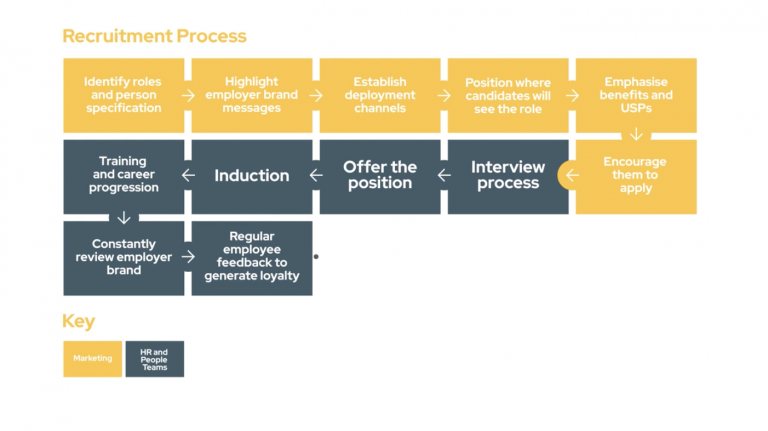Welcome to the world of on-camera interviews! Whether you’re a seasoned professional or a first-timer, the way you present yourself visually can significantly impact the success of your interview.
In this blog, we’ll walk you through practical tips on clothing, makeup, hair, and other visual aspects to ensure you look your best on screen.
Clothing:
Avoid Patterns That Cause Moiré:
Moiré patterns are visual interference that can occur when filming textured or patterned clothing. You will have seen this before when watching something on screen – it is where a person’s clothing appears to ‘shimmer’ and is due to the type of clothing that they wear. To prevent this, opt for solid colours or subtle patterns like pinstripes or small checks and always avoid clothing with very fine lines close together.
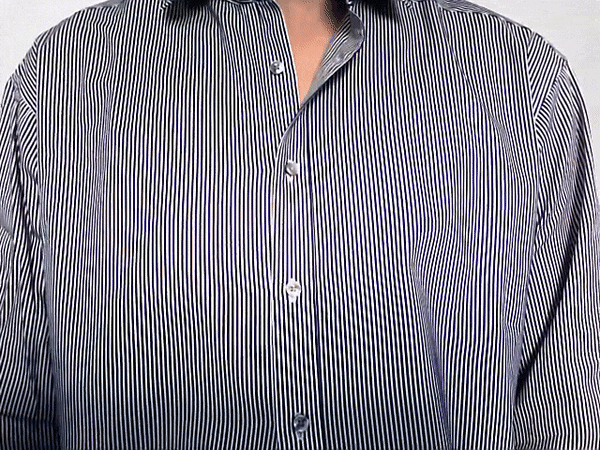
Choose Solid Colours:
Solid colours tend to work best on camera, as they reduce distractions and make you stand out. Neutral tones like navy, grey, and earthy hues are safe choices, but don’t shy away from bold colours that complement your skin tone and really ‘pop’ against the backdrop you are being filmed against.
Mind Your Neckline and Accessories:
Stick to simple necklines to avoid distracting the viewer. There have been situations in the past where we have filmed someone with quite a lot of dark foundation on their face, but a top with a low neckline and quite pale skin, causing a strange ‘two-tone’ effect on camera. Contrary to popular belief, we can’t ‘photoshop this out’ because it’s a video and not a photo! Also avoid shiny accessories that may cause glare, and opt for modest jewellery to keep the focus on your message.
Be comfortable under the lights:
Professional video production involves the use of lots of lighting on order to deliver the great visuals that you see on screen. In the old days these would create lots of heat and make the subject very hot and sweaty, however fortunately modern equipment doesn’t have quite the same issues. You will be sat for sometimes long periods, whole delivering content so wear something that is comfortable to be sat for a long time in a room that may be warm or cold.
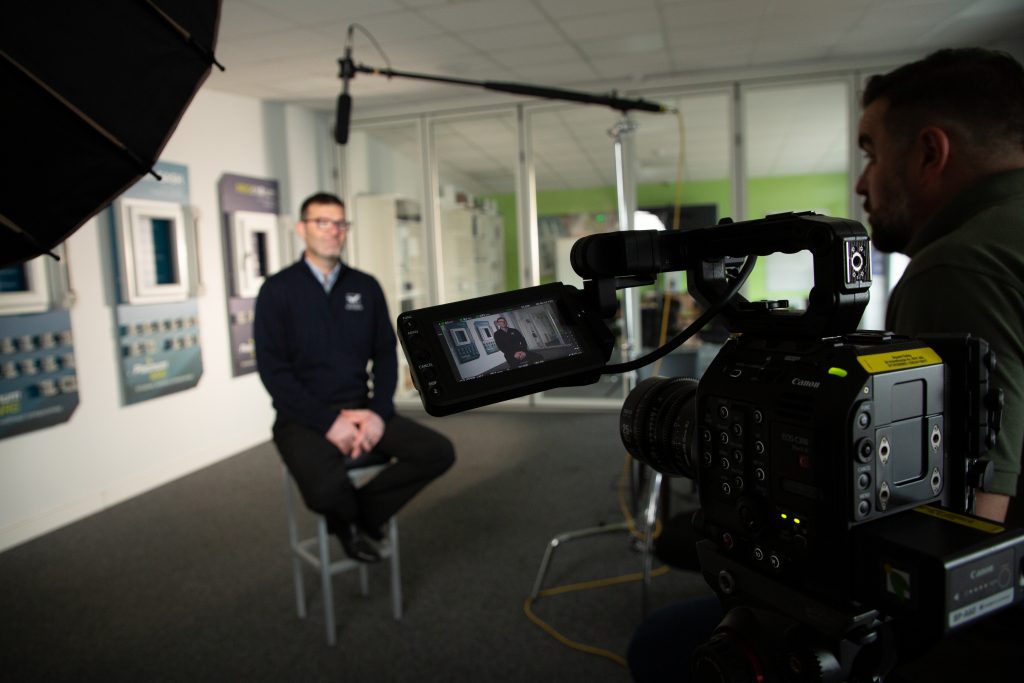
Makeup:
Natural is Key:
Keep your makeup natural and well-blended. Heavy makeup can be distracting and might not translate well on camera. Focus on enhancing your features rather than creating a dramatic look.
Minimise Shine:
Matte makeup helps reduce shine, which can be accentuated by camera lights. Use powder sparingly to control shine, especially on the forehead, nose, and chin. If you are bald, it may be useful to buy some powder to reduce shine on the top of the head.
Consider Studio Lighting:
If possible, inquire about the lighting setup in advance. Studio lights can be intense, so adjust your makeup accordingly. Matte finishes generally work well under bright lights.
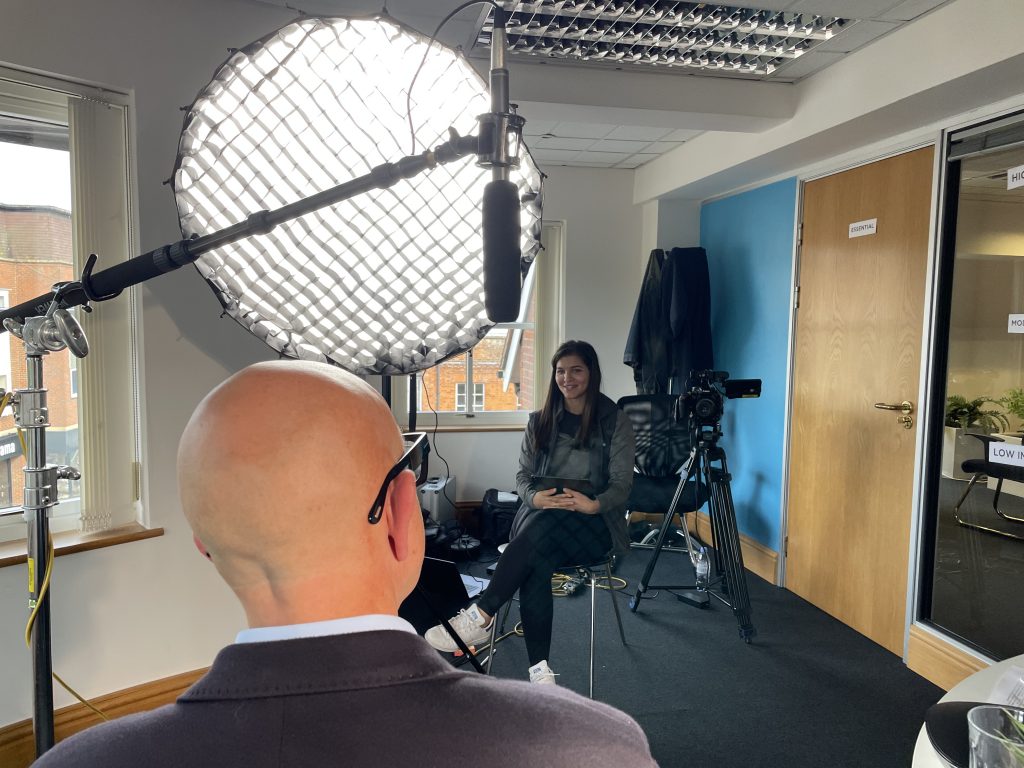
Hair:
Neat and Tidy:
Ensure your hair is clean, well-groomed, and neatly styled. Flyaways and unruly hair can be distracting on camera. Consider a quick touch-up before the interview to maintain a polished look.
Facial Hair
When we talk about hair, we also mean facial hair too! So make sure before any filming you’ve given your beard, moustache and maybe even eyebrows a bit of a tidy up!
Watch Your Part:
Be mindful of your hair part, as extreme parts or stray hairs can cast shadows on your face. A well-defined part can help create a balanced and flattering look.
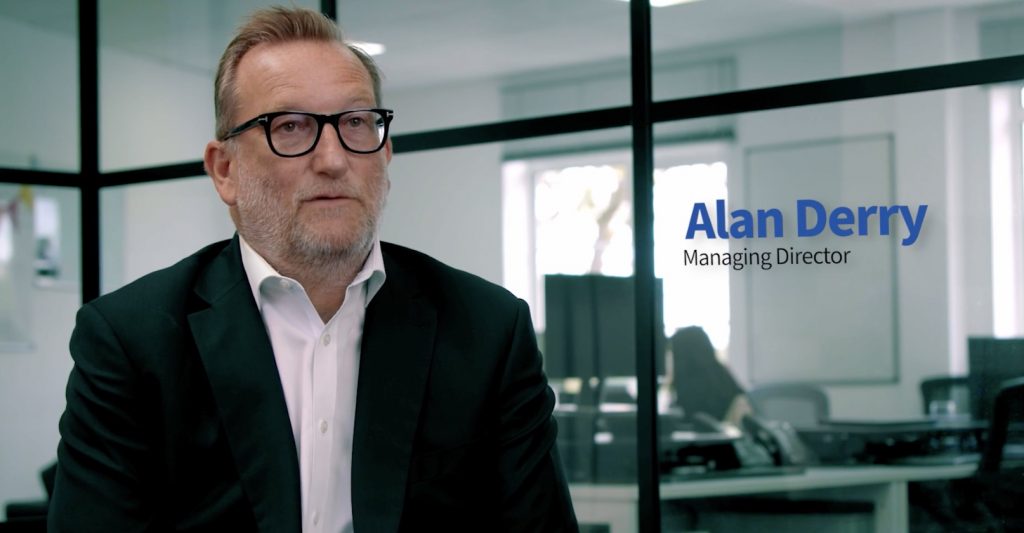
General Clothing Tips:
Dress for the Occasion:
Consider the context of your interview when selecting your outfit. Dressing appropriately for the industry and the message you want to convey adds authenticity to your appearance.
Test Your Outfit:
If possible, do a camera test in the actual outfit you plan to wear. This allows you to identify any potential issues with colours, patterns, or fit that may not be apparent in regular lighting. This can be done with just a phone or a tablet, just to get a feel for what works and what doesn’t.
Bring a Spare
There’s nothing worse on a filming day than getting all ready for the shoot and then that double latte macchiato spilling all over you because of that speed bump you didn’t see on the drive into work! Or even worse, you turn up and your colleague is wearing the same top as you! Always bring a spare top with you, just in case!
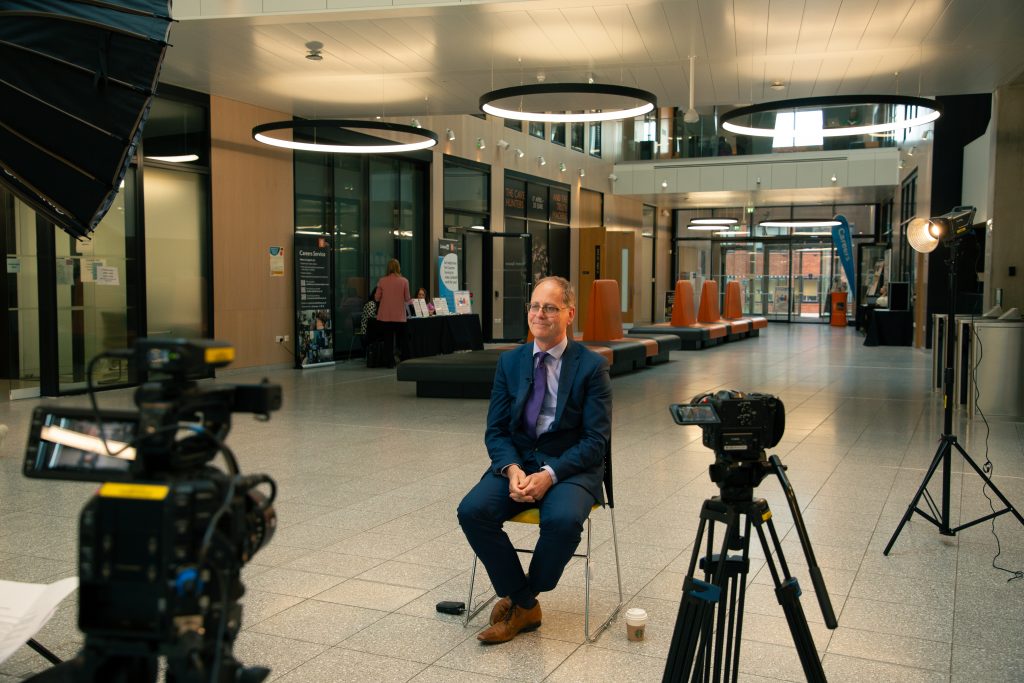
Colours of Clothing:
Know Your Colours:
Different colours convey different moods. Blues and greens are generally safe and convey trust, while red can be powerful but may be too bold for certain situations. Choose colours that resonate with your message and the overall tone of the interview.
Coordinate with the Set:
Consider the backdrop and set design. Choose colours that contrast with the background to ensure you stand out. Avoid wearing colours that blend into the surroundings.
Other Visual Aspects
Maintain Eye Contact:
Connect with your audience by maintaining eye contact with the camera where you have a shoot that involves delivery straight down the lens. This builds trust and engagement, making your interview more impactful.
Posture Matters:
Sit up straight and maintain good posture throughout the interview. This not only enhances your professional image but also helps you feel more confident and in control.
Prepare, but Not Too Much!
The last thing is to be prepared, but not overly rehearsed! In almost all cases you will be talking about the job that you do or the business that you run, but sometimes putting the key points across in a succinct way can be challenging because you are too close to the content. So our top tips to get the best content are:
- Create some bullet point notes that you want to get across but not full sentences
- List those that are essential, those that are nice to have and get rid of the ones that don’t add value
- Don’t over rehearse, just feel comfortable with what you want to say
- Get your laptop, phone or tablet and have a little practice answering the questions, then watch it back and see where your language, pace or content could be improved a bit
- Don’t try and memorise a scripted delivery verbatim as all that will happen is you’ll spend the whole time in front of the camera trying to remember words and the delivery will be too flat
It’s a piece of cake!
Congratulations! Armed with these practical tips, you’re well on your way to mastering your on-camera look. Remember, the key is to present yourself authentically while being mindful of the visual elements that can impact your interview. With the right attire, makeup, and hair, you’ll shine on screen, leaving a lasting impression on your audience. Good luck!

